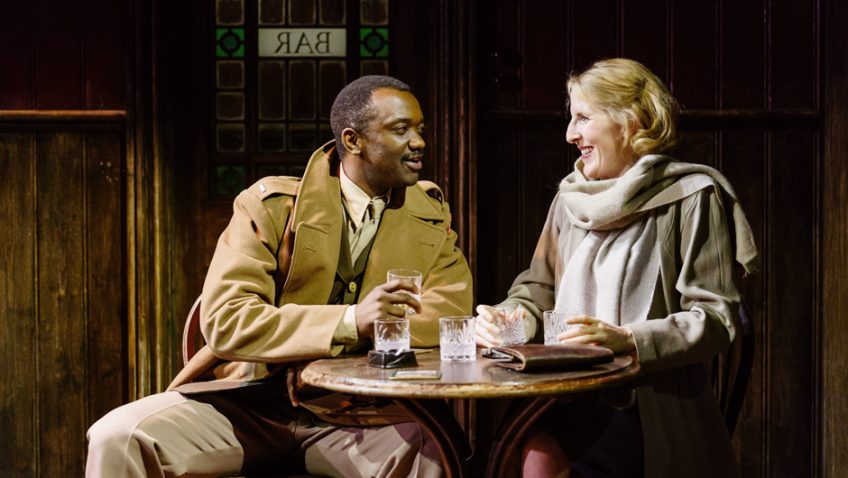
The most common examples of gaslighting in childhood could be the following: You/I didnt mean that when the person clearly did mean it. If a child is not allowed to have their healthy and authentic thoughts, emotions, goals, preferences, then their mind becomes damaged to the degree of the controlling that is going on.
Gaslight play how to#
Rough has been completely written out – and it’s now up to Bella (Julie Lumsden in the Shaw production), with only the help or hindrance of housekeeper Elizabeth (Kate Hennig) and new maid Nancy (Julia Course), to learn how to trust her own instincts and make up her own mind about what’s really happening.It is more damaging the younger the person is because a childs brain is still developing and they are dependent on their caregiver. In their introduction to their new version, Wright and Jaimeson write: “Our goal with this adaptation is to reclaim the classic thriller by allowing the female ‘victim’ to be her own rescuer.” This detective ex machina results in scenes that now seem comically heavy with exposition – and his arrival as male saviour also means the play does nothing to upend the narrative tropes about women as lesser beings who need protection and rescue, a view that could be said to help perpetuate abusers’ gaslighting in real life.īella never learns to be skeptical of men feeding her stories, but, as I wrote when reviewing a British production passing through Toronto in 2016, “simply stops believing everything her husband has told her – and starts believing everything that Inspector Rough tells her, with little proof.” In the original, an inspector named Rough arrives very quickly into the action and pretty much explains everything that is going on to Bella about the husband she married hastily. His plot, on the other hand, has started to reek a bit. Indeed, Hamilton’s play is a suspense story that’s been described both as a throwback to Victorian Gothic fiction and a forerunner of domestic-peril movies-of-the-week, rather than a mystery – so his title does not really spoil the story. “The story, for us, is: How will Bella get out of this mess?” adds Jamieson, a long-time Shaw Festival company member who is making her debut as playwright in collaboration with Wright.

“We kind of feel like people who go to Gaslight will know that she’s being gaslighted,” notes Wright, a director and dramaturge who first met co-writer Jamieson when she directed the actor in a Saskatoon production of Little Women: The Musical in 2009. There’s not really any reason to be coy about it in 2022, say Johnna Wright and Patty Jamieson, the co-authors of the new version of Gaslight at the Shaw Festival. Is it another sign of Bella’s mental fragility – or a clue as to what’s really going on in the house? She can’t recall doing any of this.Īt night, when Jack is frequently out, the gas lights in the house dim at unexpected moments.


Newlywed Bella Manningham is worried that she is losing her grasp on reality – as Jack, her husband, more in sadness than in anger, keeps asking her why she’s taken down pictures and is hiding objects around the house. The American Psychological Association defines “to gaslight” straightforwardly as “to manipulate another person into doubting his or her perceptions, experiences, or understanding of events” – and this is, indeed, what audiences find occurring in the upper middle-class house in Victorian London where Gaslight is set in the play’s opening scenes. “Gaslighting,” which was on the shortlist for Oxford Dictionaries word of the year in 2018, appeared in The Globe and Mail only twice in the first 10 years of the 21st century – but has been seen in its pages at least eleven times in 2022 alone (not counting this article you are reading). Gaslight, a 1938 thriller by Hamilton now on stage in a fresh new adaptation at the Shaw Festival, is the origin of the term “gaslighting,” a once-arcane term for reality-denying-as-mental-abuse that you’ll now find cropping up almost daily in articles about the #MeToo or Black Lives Matters movements, or in discussions of politicians whose default response to inconvenient facts is to cry #FakeNews. By contrast, the plays of English writer Patrick Hamilton can only be said to have introduced one word – a verbed noun that has been trending upwards exponentially in recent years. William Shakespeare is often said to have introduced over 1,700 new words into the English language through his plays.


 0 kommentar(er)
0 kommentar(er)
